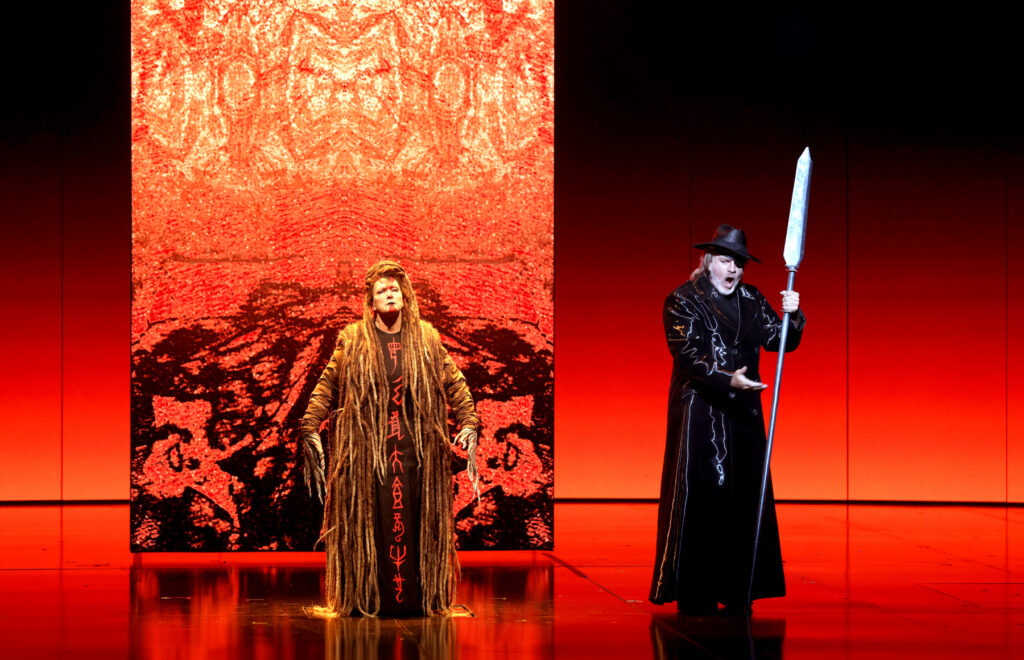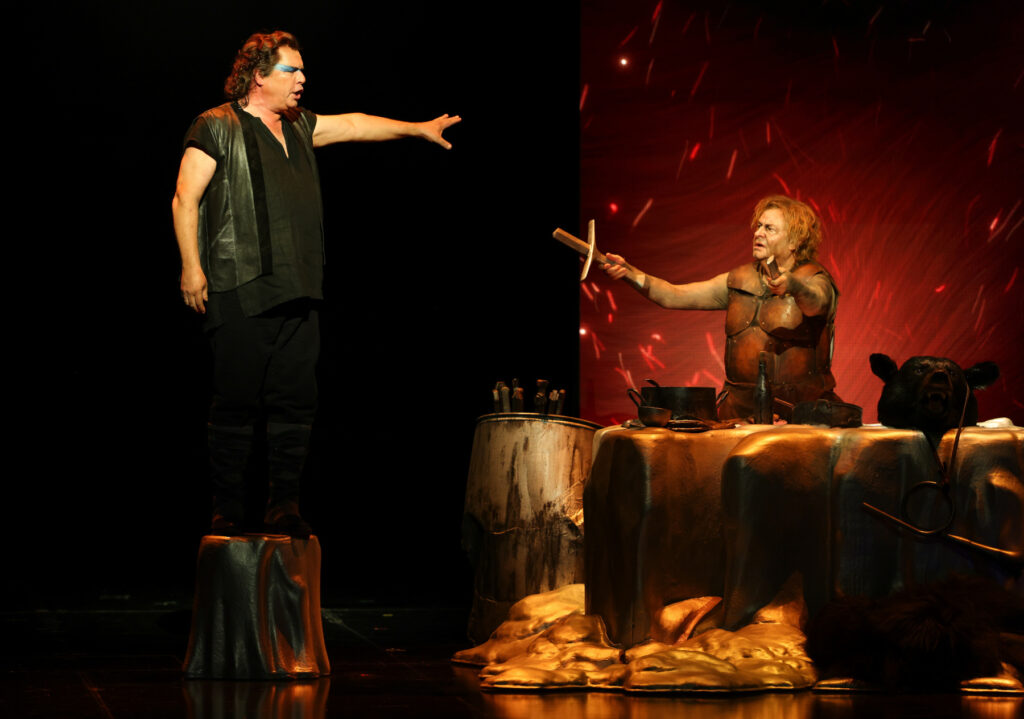Arriving for the penultimate installment of Wagner’s Ring can make it feel like it’s almost over but, welcomingly, there are hours ahead to get to know Siegfried, Wagner’s heroic titular character around whom the entire Ring cycle was created. There is, undoubtedly, no other character encountered in opera an audience is allowed to connect with and ride life’s trajectory, including a propitious introduction even before it begins, as Siegfried.
In Opera Australia’s (OA) “digital” Ring from director Chen Shi-Zheng, German heldentenor Stefan Vinke cements that connection with extraordinary ease and talent. Meeting the colossal demands the role requires in both vocal and acting expertise to bloom into the love-awakened man Siegfried becomes, Vinke’s performance forms the central part of what becomes soul-penetrating vocal and orchestral drama from start to finish.

Amongst an extensive cast of excellent and seasoned Australian artists, many of whom are making impressive role debuts across this cycle, Vinke has a solid history of performing Siegfried. Those who saw OA’s previous Ring production by director Neil Armfield will recall Vinke’s powers in both 2013 and 2016 as an artist whose investment in making his character humanly three-dimensional, enigmatic, and believable show. In this interpretation, Vinke’s Siegfried is less brattish, more insouciant, with all the impetuosity of youth aching for answers.
Throughout his journey, the transcendent beauty and intensity of Wagner’s music threaded together superbly. Conductor Philippe Auguin is now creating memory after memory with an intuitiveness in setting mood and use of tempi, which the Prelude to Act 2 or Fafners Ruhe (Fafner’s Rest), in particular, highlights so excellently.
Vinke has much ground to cover. After extracting information from his deceitful protector Mime as to who his true parents are, he reforges Nothung the sword before embarking on a quest to learn the meaning of fear. Tricked into slaying Fafner the dragon, he follows up by disposing of Mime and takes the ring and tarnhelm. He meets the forest Woodbird who sets him on the path to rescue Brünnhilde, is halted by the Wanderer we know as Wotan – unbeknown to Siegfried, his grandfather – and presses through the flames that encircle Brünnhilde before his epiphany when both are awoken to love.

Of course, Brünnhilde has been slumbering there for a generation, but she awakens in vocal majestic radiance with Lise Lindstrom’s ravishing portrayal of Brünnhilde’s mixed emotional stirrings. On the stage, Vinke and Lindstrom know each other well – Lindstrom sang alongside Vinke in OA’s 2016 production – and their chemistry is firmly alive all the way to their fervent duet to finish on magnificent hair-raising high Cs that close this installment.
As Mime, Andreas Conrad continues with his marvelous, weasel-like caricature you find yourself momentarily sympathizing with and Warwick Fyfe returns in exceptional form as Alberich, enlivening every syllable of the text while scheming on the side and content to wait as long as it takes to steal back the ring. Weary of the way of the world, Liane Keegan rises from the depths as Earth goddess Erda as she did in Das Rheingold, twisting and haunting after rudely being summoned by the Wanderer – in a long black coat and white-haired – who Daniel Sumegi brings a mix of shadowy mystery and increasing exasperation too. Nuanced and impactful across all three performances, not a skerrick of vocal fatigue showed, all the way to Sumegi’s devastating final departure as the Wanderer shuffles away from having faced Siegfried and freely giving in to his own demise. One hopes there is space on the world stage for Sumegi to keep exploring the role.
While his Fafner took the form of a gigantic snaking reptile across a field of screens to great effect, Andrea Silvestrelli bellowed and groaned with amplified threatening resonance offstage. Similarly offstage but In stark contrast, Celeste Lazarenko’s bright mellifluous voice accompanied an avian-dressed trapeze artist as the Woodbird, enlightening Siegfried in a stunning black backgrounded stylized forest of glowing dots and dripping lines through which ribbons of light swirl with any mention of the Woodbird. The entire scene evokes a wondrous fairy tale fantasy.

That sense of wonder permeates Chen’s vision for Siegfried. Many of the Chinese references and cultural associations seen earlier are, intriguingly, either gone or perhaps unnoticed, bar one scene I’ll come to. When I left this performance, LED lighting and the digital world was there waiting, providing its enhancement and magic, often a message and sometimes, distractions. Chen makes thoughtful and seductive use of digital technology in this instance, delivering a well-resolved balance between evocative screen imagery and spatial effect, something that never settled in Das Rheingold. In this modern-day digital world, what does this “digital” Ring wish to achieve and express? There is one scene that I offer as an example to mull over and make sense of.
The Act 1 opening scene in Mime’s workshop abode begins with restraint. When Siegfried learns of the broken sword Nothung, its form hangs and rotates in several digital banners. During its reforging, the sparks fly in a brilliant enveloping atmosphere of red-orange. But then, just as the final sword-making process is underway, one by one, ribbon dancers – and ribbon dancing is a traditional art form that originated in ancient China – make a brief appearance then stream across the stage rear and shatter the connection to Vinke and Conrad’s absorbing performance. You have to wonder why: apart from their red ribbons mimicking licks of fire. So, unable to get straight back into the forging of the sword, I pondered and decided that no matter what is forged for the future, the cultural past is never to be forgotten. Or am I lost on a tangent?
Chen’s storytelling is otherwise reliably crystal clear, his characters are vivid and relatable and their interactions convincing. That should be enough but, at times, this multiverse of theatrical trimmings is sending out mixed messages across time and space.
Paul Selar
Top Image: Stefan Vinke as Siegfried and Lise Lindstrom as Brünnhilde
Photo Credit: Wallis Media